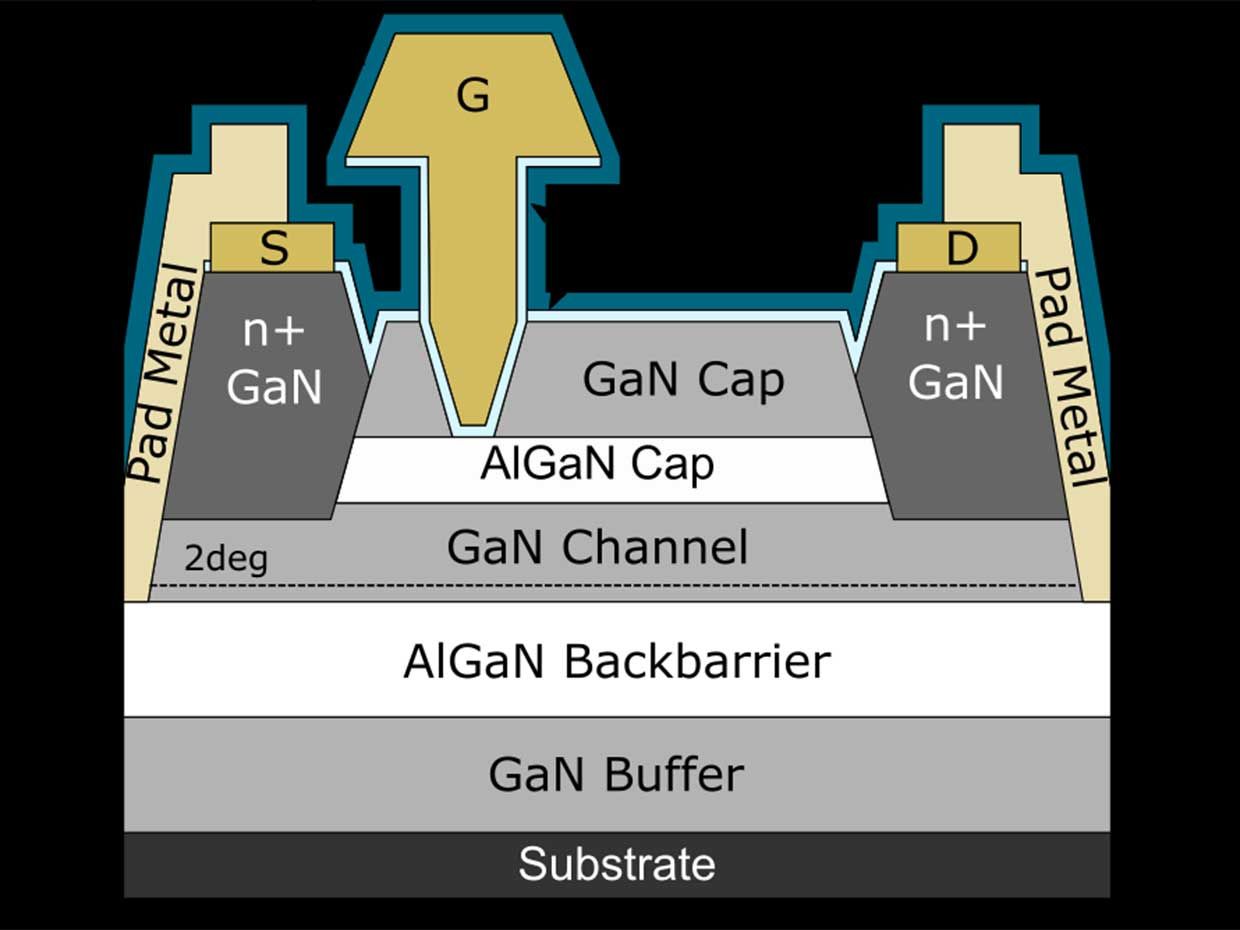IEEE Spectrum September 24, 2020
Researchers at UC Santa Barbara have been developing a device that could be critical to efficiently pushing 6G’s terahertz-frequency signals out of the antennas of future smartphones and other connected devices. They show that N-polar GaN deep recess HEMTs grown on sapphire match the power performance of a device on SiC up to 14 V with 5.1 W/mm of output power density. At 16 V the device on sapphire starts to suffer from thermal effects but still demonstrated 5.5 W/mm with an associated 20.6% power-added efficiency. This work also examines the impact of encapsulating the device in a low dielectric constant film often used for the implementation of a RF wiring environment…read more. TECHNICAL ARTICLE

A two-dimensional electronic gas (2DEG) in the HEMT’s gallium nitride channel allows for high-frequency amplification. Credit: University of California, Santa Barbara